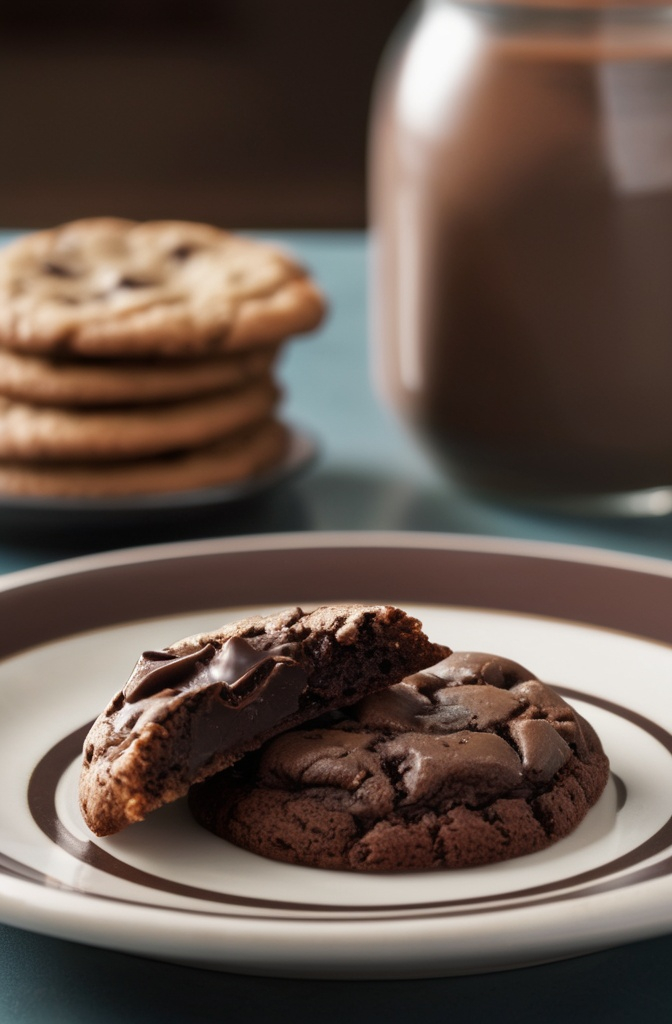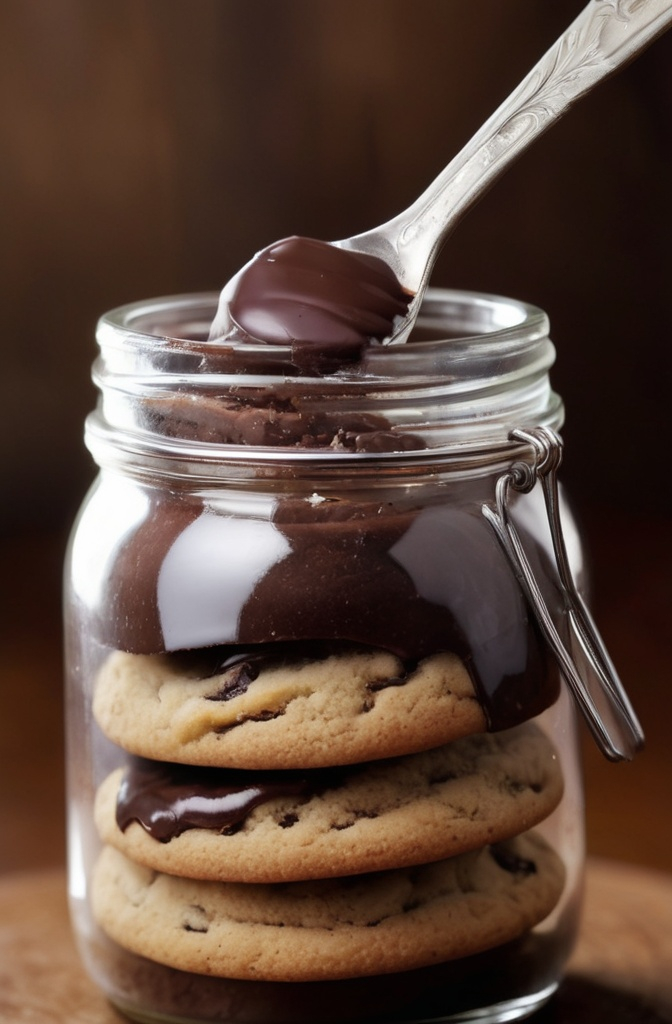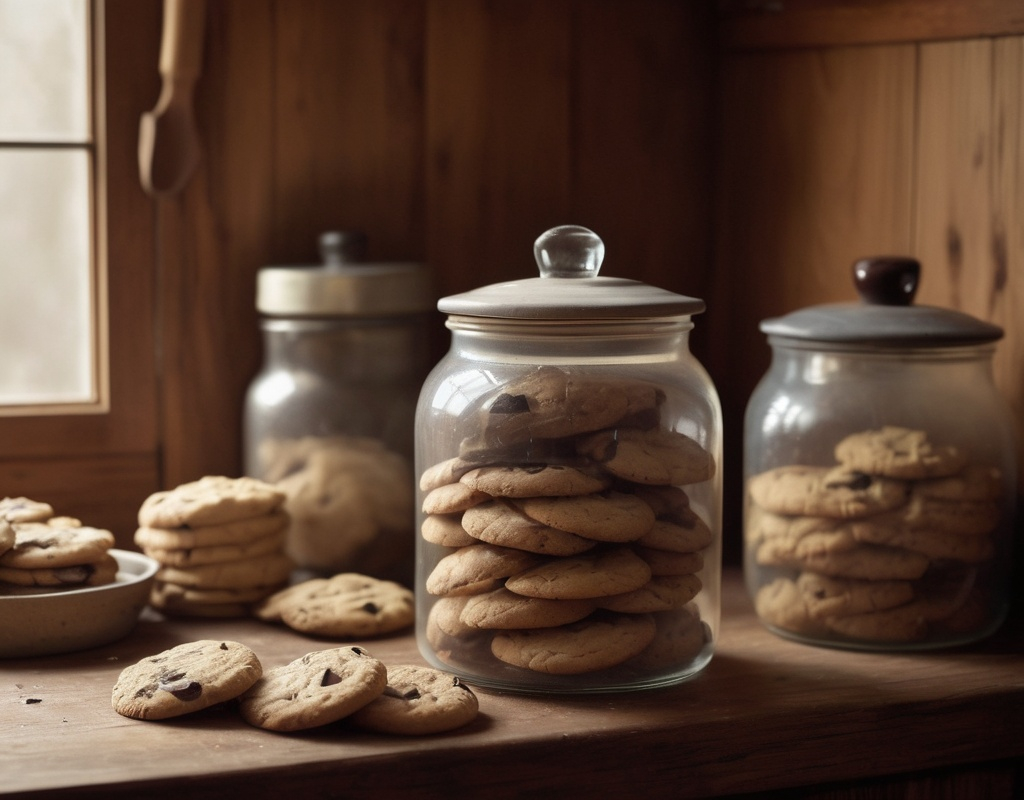Bite into one and your tastebuds may start to question reality. Not just because of the sheer intensity of chocolate, but because a good Death by Chocolate Cookie isn’t just a cookie—it’s a statement. A full-throttle, unapologetic, overload of flavor. It’s the culinary version of putting your foot on the gas and never letting up. This isn’t about sweetness. This is about depth, complexity, and technical execution.
So what exactly is a Death by Chocolate Cookie? You think you know. But you probably don’t know it all. That’s where we begin.
A Cookie That Breaks the Rules—and Rewrites Them
Let’s be blunt. If your Death by Chocolate Cookie just tastes like a basic brownie with a bit of extra cocoa? You’re not doing it right. The name isn’t just for drama. It refers to an intentionally rich, multi-layered chocolate experience. Think dark cocoa, melted bittersweet chocolate, chocolate chips, ganache cores, maybe even cocoa nibs or black cocoa for bitter undertones. It’s a complex beast.
In professional kitchens, we don’t treat these as mere snacks. We develop them the way you’d build a plated dessert—layering texture, fat, and flavor to hit every note from fudgy to crisp to molten. Texture’s king here. Or queen. Or tyrant. Depends on your ratio.
Anatomy of a Cookie That Might Ruin You for All Others
At the foundation is your cocoa powder. Now, here’s where people go wrong. Don’t grab generic supermarket cocoa unless you want flat, lifeless cookies. You want Dutch-processed cocoa for that rich, smooth, low-acid flavor. Valrhona is the gold standard in many patisserie kitchens, but Cacao Barry or Guittard Noir are right up there.
Next comes melted chocolate. Don’t skip this. Melted chocolate adds fat, sheen, and that deep cocoa butter note that powder alone can’t touch. You want at least 60% cacao solids—some go higher. In some pro kitchens, we use two types: one bittersweet and one unsweetened, to control sugar and intensity.
Here’s a wild but effective move: toss in a tablespoon of instant espresso powder. No, not to make it taste like coffee. Just a pinch sharpens the chocolate notes like contrast on a photo. It’s magic.
Fat Matters. But Which Kind?
Butter’s the classic. It gives you richness, crisp edges, and that unmistakable dairy backbone. But swap in browned butter and now you’re talking nuttiness, umami, depth. Browned butter also slightly reduces moisture, changing texture in subtle but significant ways.
In vegan applications or heat-stable bulk batches? Refined coconut oil steps in surprisingly well, especially paired with dark chocolate. But be warned—it can mute some top notes if overused.
The Textural Triad: Fudge, Crumb, Snap
Good Death by Chocolate Cookies are an internal contradiction. You want a crispy shell, a gooey interior, and tiny crunch from mix-ins. Professionals balance these using sugar science.
Use more brown sugar for chew. White sugar lends crisp. Want crinkle tops? Chill your dough and bake hot—400°F works well in convection ovens. Shock them with a baking sheet slam halfway through baking. Trust me. It’s a little culinary aggression that works wonders.
Want molten centers? Freeze chocolate ganache balls and stuff ’em into the dough before baking. Don’t skip the chill. Dough needs to be cold going in if you want that shell to form before everything inside goes goo.

Mix-Ins That Don’t Belong—and Ones That Do
This is not the place for peanut butter chips. Save those for chewy classics. In Death by Chocolate Cookies, mix-ins are either textural contrast (think chopped 72% couverture shards) or flavor amplifiers (like toasted cacao nibs, sea salt flakes, or smoked Maldon).
Macadamia nuts are underrated here. Their buttery crunch offsets chocolate’s weight. Walnuts? Maybe. Pecans? Toast ‘em first or don’t bother.
Here’s an unexpected winner: dehydrated black cherries chopped fine and soaked in bourbon. Add a spoonful per batch. It’s like sneaking in a tuxedo under a hoodie.
Real-World Data: What Sells and Why
In a 2023 study by the National Confectioners Association, products featuring “dark chocolate” saw a 9.4% year-over-year increase in premium product categories. At Dominique Ansel Bakery in NYC, their limited-release “Chocolate Explosion” cookie sells out in under 45 minutes, three days a week. Data shows consumers are increasingly seeking rich, indulgent, experiential desserts—cookies included.
Professionally speaking, Death by Chocolate Cookies allow for high margin customization. Add edible gold leaf, branded wrapping, or a paired dipping sauce (think salted caramel ganache), and your cost-to-retail ratio stays aggressive. One bakery in Tokyo sells a single Death by Chocolate Cookie for $8. People line up. Daily.
Flour, Eggs, and the Unsung Heroes of Structure
Flour choice changes everything. All-purpose is fine, but if you want chew, mix in bread flour (protein adds stretch). Cake flour makes them tender, which isn’t always the goal here—but a 2:1 blend gives balance.
Eggs? One whole, plus one yolk for richness. In some high-end bakeries, chefs sub duck eggs—larger yolks, more fat. You get gooey centers without underbaking.
One mistake: overmixing. Once your flour hits wet, gluten begins developing. Too much agitation, and your cookies end up like hockey pucks wearing chocolate hats. Fold gently. Chill. Rest.
Shelf Life and Storage: Keeping the Monsters Fresh
These cookies freeze beautifully, either raw or baked. For raw dough, scoop and freeze flat, then bag airtight. Bake from frozen at a slightly lower temp and increase time by 1-2 minutes.
Baked cookies stay optimal for 3 days at room temp in a sealed container—add a slice of white bread to keep moisture stable. For café service, reheat 8–10 seconds in a 1000-watt microwave. Not longer. Not negotiable.
Addressing the Lies: “Too Rich” Isn’t a Thing
Let’s squash this. Chocolate lovers don’t complain about “too rich.” That’s a marketing problem, not a recipe issue. If someone says it, what they probably mean is “I wasn’t expecting this depth of flavor from a cookie.” That’s not a bug, it’s a feature.
What you want is complexity, not cloying sweetness. Use salt—good salt—to balance. Maldon, Jacobsen, even smoked salt works if your chocolate is bold enough. Salt doesn’t fight sweet. It lifts it.

Trend Watch: Fermented Chocolate & Alt-Sweeteners
Here’s where things get exciting for the pros. Single-origin fermented chocolates are hitting pastry kitchens in a big way. Amedei, Pump Street, and Dandelion are all doing small-batch bars with notes like tobacco, red fruit, and umami. When you melt those into cookies? You’re not making dessert—you’re writing poetry.
For health-conscious markets, coconut sugar or date syrup provide lower glycemic alternatives with their own deep, molasses-y notes. Not keto, but certainly cleaner label.
Final Thought: The Cookie as Canvas
Death by Chocolate Cookies are one of the few places where chefs can really flex inside a bakery case. They can be humble or haute. Street food or starred restaurant.
If you’re a pastry pro or a serious home baker, this cookie is a perfect way to explore layering, technique, and even storytelling. Because at its best, this cookie tells you something about who made it. How they think. How they build.
Actionable Takeaways
- Use Dutch-process cocoa for smooth, rich chocolate flavor.
- Layer chocolates: powder, chunks, melted—use at least two types.
- Chill dough before baking to control spread and build texture.
- Incorporate salt smartly—don’t just toss it in, use flakes strategically.
- Explore origin chocolates for boutique-level flavor profiles.
- Balance fat and flour types to control crumb and chew.
- Experiment with fillings—frozen ganache, fruit infusions, even booze.
- Understand your audience: some markets want indulgence, others want “cleaner” cookies.
And above all? Don’t call it a Death by Chocolate Cookie if it doesn’t hit like a brick of velvet. You’re not here to make friends. You’re here to make people go whoa with one bite.
FAQs
What makes a cookie a “Death by Chocolate” cookie?
It’s an intensely rich, multi-layered chocolate cookie made with multiple types of chocolate and deep cocoa flavor.
What type of cocoa powder should I use?
Use Dutch-processed cocoa for smooth, bold, low-acid chocolate flavor.
Can I use chocolate chips instead of chopped chocolate?
Yes, but chopped chocolate melts better and adds a more luxurious texture.
Why chill the dough before baking?
Chilling prevents overspreading and helps develop a chewy, gooey center.
What kind of chocolate is best?
Bittersweet or dark chocolate with at least 60% cacao for depth and balance.
Can I freeze the cookie dough?
Absolutely—scoop and freeze, then bake from frozen with a minute or two extra.
How do I make the center gooey?
Freeze ganache balls and bake them inside the dough for a molten core.
Are there good vegan alternatives?
Yes—use refined coconut oil and flax eggs or aquafaba for structure.
What’s the benefit of adding espresso powder?
It enhances and intensifies the chocolate flavor without tasting like coffee.
Is it really “too rich” for some people?
Not usually—if balanced with salt and proper technique, it’s indulgent, not overwhelming.
Can I add nuts or fruits?
Yes—macadamia nuts, pecans, or bourbon-soaked cherries work brilliantly.
How long do they stay fresh?
Up to 3 days at room temp in a sealed container or months in the freezer.
What flour blend gives the best texture?
A mix of all-purpose and bread flour creates ideal chew and structure.
How do bakeries sell these at a premium?
By using quality ingredients, upscale presentation, and flavor layering that justifies price.
Are fermented or origin chocolates worth it?
Definitely—they add unique, nuanced flavors that elevate the entire cookie.

Mariana is a passionate home cook who creates delicious, easy-to-follow recipes for busy people. From energizing breakfasts to satisfying dinners and indulgent desserts, her dishes are designed to fuel both your body and hustle.
When she’s not in the kitchen, she’s exploring new flavors and dreaming up her next recipe to share with the Foodie Hustle community.

